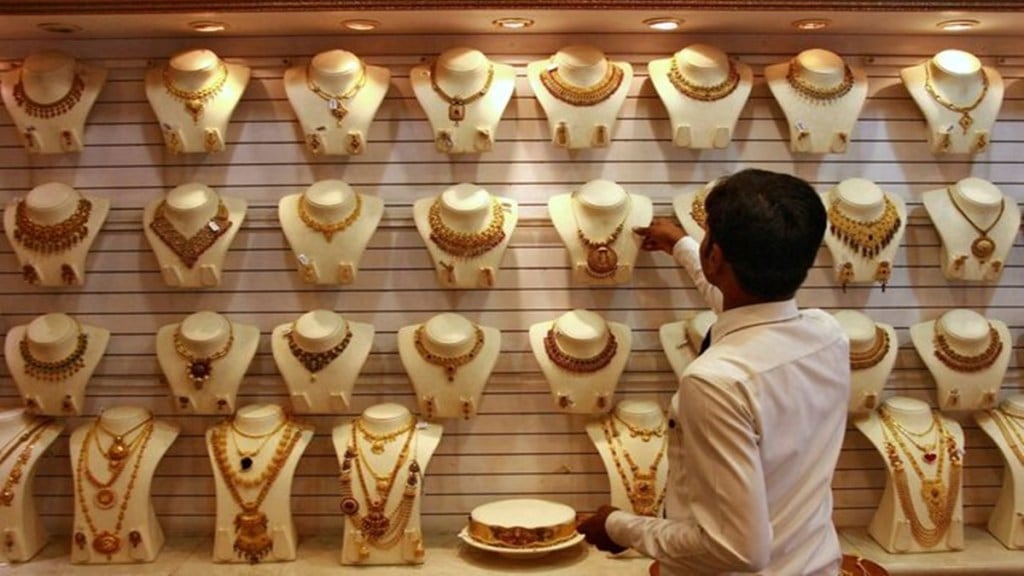Jewellery retailers are increasingly shifting their attention to lightweight and low-karat pieces as gold prices remain firm amid trade, tariff and geopolitical uncertainties. The government’s recent move to hallmark 9-karat gold jewellery has also come as a shot in the arm for retailers looking for more buyers ahead of the festive season. Gold sales by volume fell by a record 60% in June — the steepest decline since the Covid-19 pandemic. This comes as gold prices have surged nearly 30% in the first half of 2025.
Low-karat offerings gain traction
Organised players — from Titan to Kalyan Jewellers, Senco to Malabar Gold and Diamonds — are experimenting with 18-karat jewellery in plain gold and 14-karat pieces in studded jewellery in a country where 22-karat jewellery is the norm in plain gold and 18-karat is the currency in studded jewellery. Studded jewellery includes a mix of gold and gemstones or diamonds.
Last week, Titan, the country’s largest organised jewellery retailer, went a step head and began piloting 9-karat pieces at Mia stores. The company had earlier experimented with 9-karat jewellery at Caratlane in February.
“Consumers at lower price points whose budgets are within the Rs 50,000-Rs 1 lakh bracket are feeling the pinch of high gold prices. While the secular trend of gold (price) moving up will remain for now, we have to provide options to consumers (at lower karatage), since the love for gold remains,” Ajoy Chawla, CEO of Titan’s jewellery division, said.
Ramesh Kalyanaraman, executive director, Kalyan Jewellers, said the company had been churning its product portfolio and mix with gold prices surging. “The inventory composition, including heavyweight (22-karat), lightweight (14-karat) and midweight (18-karat) jewellery, undergoes transition when there is a sharp increase in gold prices. We adjust the portfolio (in favour of lightweight jewellery) when prices go up,” he said.
Studded jewellery finds favour among Gen Z, millennials
Also, the preference for studded jewellery which includes a higher proportion of gem stones than gold has been on the rise in the last few years as Gen Z and millennial consumers opt for trendy, everyday wear, experts said. It is also light on the pocket. Kalyanaraman says that gem stones constitute about 40-45% of the proportion of studded jewellery. “So, it is viable for both jewellers and consumers to look at studded jewellery when (gold) prices move up,” he said. Chawla says that the preference for 14-karat studded jewellery among consumers has been on the rise in north India and parts of the east in recent years, with the trend growing as gold prices remain firm.
Suvankar Sen, MD & CEO of Senco Gold and Diamonds, which has a strong presence in the east, said that 14-karat jewellery has been growing within its studded portfolio. “For budget-conscious consumers, younger buyers and those who are looking at gifting options, studded jewellery works well. We are looking to accelerate our diamond and lightweight jewellery lines in the future,” he said. Malabar Group chairman M P Ahammed said the company has been focusing on lightweight jewellery as the daily wear category grows.
Titan, Kalyan Jewellers and Senco said in their June quarter updates that they saw double-digit growth (35-67%) in their studded jewellery portfolios, driven by lightweight and low-karat jewellery. Studded jewellery today constitutes over a third of jewellery sales in India.
While 24-karat gold costs a little below Rs 1 lakh for 10 grams, 22-karat gold comes at around Rs 91,590, 18-karat at around Rs 74,940, and 14-karat gold at Rs 58,800, according to bullion traders. This excludes 3% goods and services tax (GST). If added, 24-karat gold price crosses Rs 1 lakh, 22-karat gold nears the Rs 95,000-mark and 18-karat gold crosses Rs 75,000-mark (per 10 grams) at the retail end. In contrast, 9-karat gold is about Rs 34,730 for 10 grams, according to bullion traders, which increases to Rs 35,772, including 3% GST, at the retail end.


